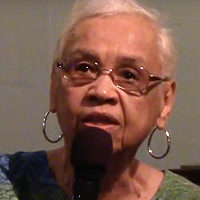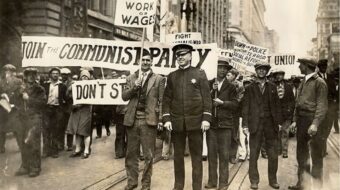The Story of Civil Rights In York, Pennsylvania: A 250-Year Interpretive History
By Jim Kalish, 264 pages, York County Audit of Human Rights
225 East Princess Street, York PA 17403. (717) 843-2039.
On a visit to the Galeria, a spacious mall outside of York, Pa., I sat in the Food Court observing youth of all colors working and socializing together on a summer afternoon in August 2001.
Could this be the York, Pa. where Mayor Charles Robertson, along with 10 others had just been indicted and charged with the murder of Lillie Belle Allen during the 1969 race riots? Had life in York really changed in 33 years?
Less than six months after my visit, five white supremacist groups held a meeting in the York City library Jan. 12.
“If you want to understand York, Pa. there’s a book you should read,” a York resident told me. The book The Story of Civil Rights In York, Pennsylvania: A 250-Year Interpretive History by Jim Kalish, uncovers the facts of racism in the economic, cultural and civic life of the York area.
This book will never bore the reader. Its stories and photographs express the unending struggle for civil rights and human rights in York, a city of 45,000 in “middle America.” The heroes and heroines in this book are real working people, sometimes disillusioned but never defeated.
The plight of African Americans in York has been harsh and exploitive. York County had 30 enslaved Africans when it was founded in1749; by 1772 that number had increased to 448. They helped to clear the land and build the towns, towns in which African Americans have never been welcomed.
One of the first civil rights heroes was William Goodridge, a former slave who became a prosperous businessman and part of the Underground Railroad in the early 1800s. He fled to Minnesota in 1859 to save his own life.
During the Civil War the business leaders of York paid the Confederate Army to not burn down the city. As the Confederate Army marched through York, some citizens waved Confederate flags. Yet 3,780 Yorkers served in the Union Army and many died.
After the Civil War, York grew rapidly into an industrial and business center called “The Gateway to the East.” But African Americans were locked out of the booming economy and relegated to only the most menial and low-wage jobs, segregated in a small area of the city, isolated and excluded from city life. This legacy continued for decades.
Jim Kalish was asked to write this civil rights history for the 25th anniversary of the York City Human Relations Commission, an organization founded in 1974 that has the power to enforce anti-discrimination laws. Even when anti-discrimination laws were passed, racist customs continued in employment, housing, education, health and welfare, public accommodations and the criminal justice system in York County. The book describes numerous studies, conferences and protests in the 1940s through the 1990s.
An NAACP chapter was founded in the 1940s. The Peaceful Committee for Immediate Action, the York County Advisory Board and the Black Unity Movement all started in the 1960s, and the Congress of Racial Equality in the 1970s.
All were part of the fight for civil rights, not only for African Americans but for all oppressed people.
York County has changed greatly in the last 30 years, but not always for the better. On what was once farmland, suburban sprawl began to take over in the 1960s, a process that continues now. Thousands of white Yorkers left the city for the nearby suburbs and businesses and industry followed. Expansive malls and industrial parks were built. But again African Americans, Latinos, immigrants and poor whites were not welcome.
York City lost a large part of its tax base and many jobs. The illegal drug business exists in both the city and the county, hidden in the suburbs and rural areas but well documented in the city.
York tried to desegregate its schools but many white families put their children in private and parochial schools.
Presently York City schools are 64 percent non-white while the city’s population is only 35 percent non-white, largely African American and Latino.
When the Latino and immigrant population increased during the 1980s and 90s they moved into or near the African American area of the city.
During the 1990s the number of white supremacist and hate groups increased in Pennsylvania and York County. The Ku Klux Klan has been active there since the 1920s.
This book clearly points out the need for regional solutions for civil rights problems.
National conglomerates and corporate businesses dictate the economic policies for the entire region and must be held responsible for helping to solve the problems of racial inequalities.
The history of York, Pa. is similar to the history of many U.S. cities. This can serve as a model for those who want to write their own local history.










